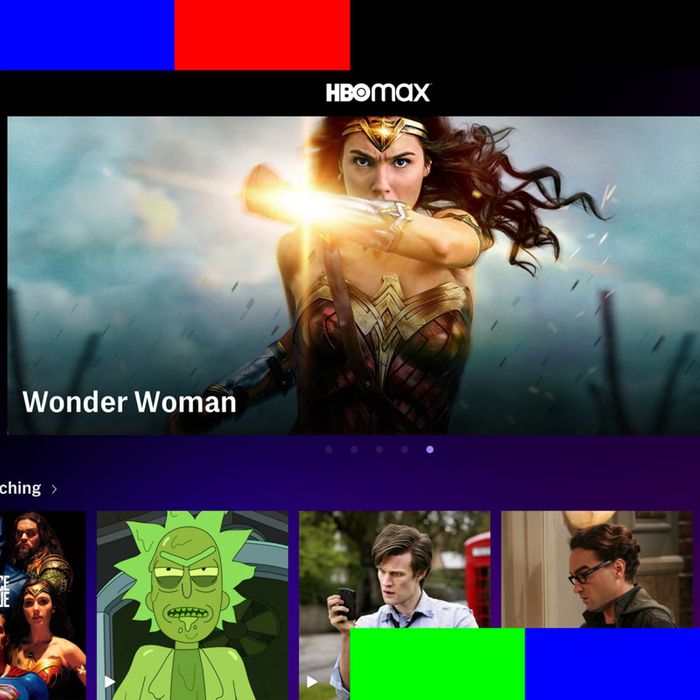Why You Can’t Get HBO Max on Roku and Amazon (Yet) – Vulture
[ad_1]

Photo-Illustration: Vulture and HBOMax
HBO Max blasted off Wednesday without any major glitches, but for many consumers, there was a catch: Not everyone has equal access to the new streaming service.
Millions of potential customers discovered that they simply had no way to sign up for the service, even if they wanted to. That’s because AT&T–owned WarnerMedia was unable to reach agreements with two big streaming gatekeepers — Roku and Amazon’s Fire TV — ahead of Max’s launch Wednesday morning. (It did sign a last-minute deal with Comcast a few hours after the service debuted.) Nobody involved is talking about the details of the disputes on the record, and talks continue: A rep for Roku told Buffering it “still looked forward” to figuring out a way to get the service on its platform. Deals could be done by the time you read this. Whatever the specific sticking points, it’s safe to assume the big issues are related to money and control: How much of Max’s $15 monthly fee WarnerMedia is willing to share with distributors, and how Max’s content is displayed to users.
HBO is used to splitting up to half its fee with cable operators, so I don’t know that financial terms are what’s causing the biggest headache here. Instead, what’s likely going on is something analyst Rich Greenfield of LightShed Partners wrote about recently: WarnerMedia wants consumers to have to watch Max programming in the Max app, and not as part of the internal ecosystems platforms such as Roku and Amazon have created on their devices. This isn’t some crazy demand by WarnerMedia, by the way: Netflix and Disney+ don’t let their shows slum around in other platforms’ unique universes. Sure, titles will show up in the Apple TV or Fire TV interfaces, but when you click to watch, you get taken to an outside app. I don’t know why Roku and Amazon are demanding HBO play by a different set of rules — if that is indeed what’s happening — but Greenfield thinks it’s because regular HBO has been okay with having its content disaggregated on those platforms.
By contrast, now that it’s diving deeper into the streaming waters, WarnerMedia wants to follow the examples of Netflix and Disney and get consumers to use its app, not the Roku or Amazon interfaces. Streamers want to do things this way because they can collect more information about how users relate to content and build a more personal connection to customers when they use a separate app. Conversely, Roku and Amazon want you sticking around their universes because they’re now both in the business of selling advertising on free services such as the Roku Channel and IMDBtv. They also argue it’s far more consumer friendly if people don’t have to switch between a million apps when sampling content. (Fact check: true.)
What Amazon’s saying: “With a seamless customer experience, nearly 5 million HBO streamers currently access their subscription through Amazon’s Prime Video Channels. Unfortunately, with the launch of HBO Max, AT&T is choosing to deny these loyal HBO customers access to the expanded catalog,” Amazon said. “We believe that if you’re paying for HBO, you’re entitled to the new programming through the method you’re already using. That’s just good customer service and that’s a priority for us.”
What Roku’s saying: “As the No. 1 streaming platform in the U.S. we believe that HBO Max would benefit greatly from the scale and content marketing capabilities available with distribution on our platform,” the company said in a statement. “We are focused on mutually positive distribution agreements with all new OTT services that will deliver a quality user experience to viewers in the more than 40 million households that choose Roku to access their favorite programs and discover new content. Unfortunately we haven’t reached agreement yet with HBOMax. While not on our platform today, we look forward to helping HBOMax in the future successfully scale their streaming business.”
Who’s got the upper hand? I can see both sides of the argument, though if I had to make a call, I’d say Roku and Amazon are the heavies here. Consumers such as myself bought Roku and Fire TV sticks (yes, I have both — and an Apple TV) because we were told these devices were a great way to get streaming services such as HBO Max. Nobody, and let me underline this, nobody buys a Fire TV so that they can stream episodes of Spenser: For Hire with ads on IMDBtv. (And I say this as someone who has done just that.)
Yes, having content from different platforms aggregated into one interface is great for viewers — particularly if said interface is Apple TV, which does an amazing job surfacing great shows and movies I didn’t even know were available to me via my cable subscriptions. I don’t blame Roku and Amazon for pushing to get more flexibility from streaming services as to how their content is displayed. But at the end of the day, what’s really consumer unfriendly is selling people a box for $40 or $60 or even $100 on the promise that they’ll be able to stream all the big platforms — and then going back on that promise in order to serve your own business interests. Cable operators did just that for decades, and look what has happened to them.
Let’s block ads! (Why?)
[ad_2]

